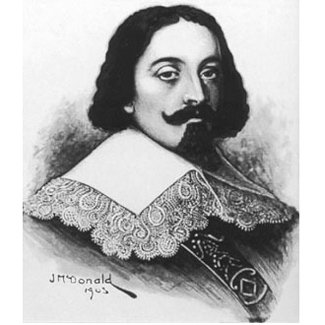On this day: Abel Tasman sights Tasmania

“IN THE AFTERNOON, about 4 o’clock…we saw…the first land we have met with in the South Sea…very high…and not known to any European nation”.
After months at sea, the Dutch explorer Abel Tasman’s diary entry for the 24 November 1642 marks the first official discovery of a land beyond the Australian mainland. He had discovered what he called Van Diemen’s Land.
“By 1642 the Dutch had charted the north, the west and much of the southern geographical limits of what became the nation of Australia”, says historian Edward Duyker from the Australian Catholic University in Sydney. But nothing was known about the continent as a whole. Tasman was commissioned by the Dutch East India Company to investigate the rest of this mysterious Southern land, then called Terra australis incognita.
Tasman is thought to have been born around 1603 in Holland. He participated in anti-smuggling raids and other governmental marine exercises before working with the Dutch East India Company. He was commemorated with a purported likeness on a 1985 Australian stamp, and scholars agree that no fully authenticated portrait of him exists.
Abel Tasman sights Tasmania
On the 24 November 1642, Tasman’s crew had encountered the west of Tasmania, most probably at Cape Sorell, but he decided for safety in unknown territory to take the ships further out of the bay when evening arrived. The crew spent the next week following the coastline south looking for a suitable place to land due to bad weather that ensued.
On 1 December they anchored north-west of Green’s Bay an hour after sunset. They explored the next day and found local plants to eat, but the day after, with the weather too difficult to row to the shore, the carpenter, Peter Jacobson, volunteered to swim across and plant the prince’s flag.
The crew reported hearing human voices and seeing smoke rising from several points on shore during their time in Tasmania, but not sighting people in the flesh. Tasman sailed around to the east and discovered New Zealand on 13 December.
Tasman’s Pacific discoveries
“Although Tasman did not meet the indigenous inhabitants of Van Diemen’s Land, in ushering their island into the European imagination, he effectively shattered their 14,000 year isolation”, Duyker says. He then proceeded to make the first circumnavigation of our continent.
Tasman discovered New Zealand, Tonga and Fiji and other Pacific Islands after visiting Tasmania, and ironically it was only on a second trip that he located the Australian mainland.
Despite all these achievements, his superiors deemed his trips as failures because he didn’t establish trading posts.
Tasman “effectively proved that our island continent was not attached to another land mass to the south or east”, Duyker says. “It was only then than the Dutch began to call this continent Nova Hollandia (New Holland), as opposed to the unknown southland Terra australis incognita”.
RELATED STORIES

